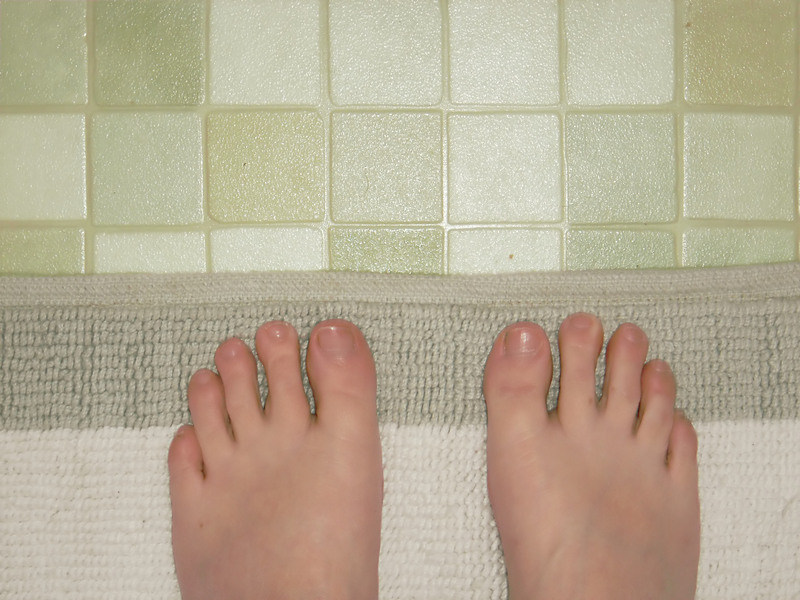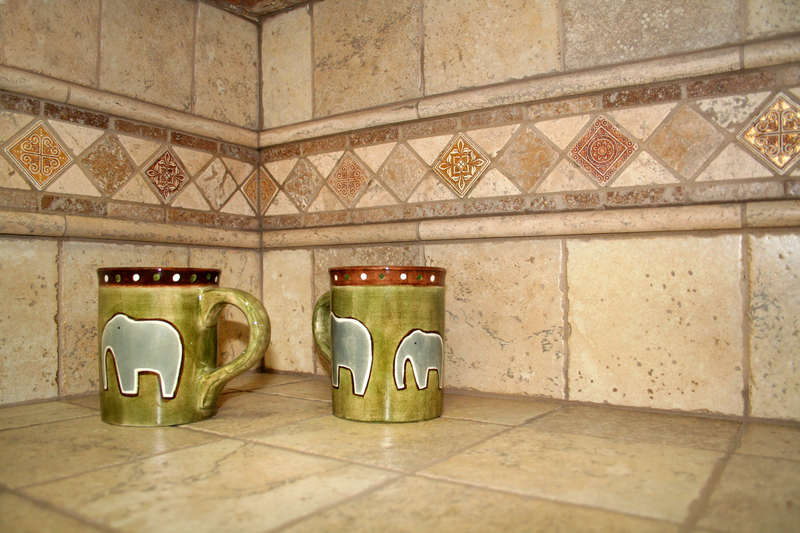Simple solutions for maintaining an allergen-free and dustless home
Posted on 31/05/2025
Simple Solutions for Maintaining an Allergen-Free and Dustless Home
Allergen-free living isn't just a dream for those with allergies or sensitivities--it's a vital step toward overall wellbeing for every household member. Dust, allergens, and tiny particles can accumulate rapidly in a typical living space, affecting air quality and causing discomfort or health issues. By adopting simple habits, choosing the right cleaning tools, and making focused lifestyle adjustments, you can achieve a dustless and allergy-friendly environment.
Understanding Household Allergens and Dust
Before you can eliminate or reduce allergens and dust, it's crucial to recognize where they come from and which factors exacerbate their presence. Common household allergens include:
- Dust mites: Microscopic bugs that thrive in fabric, bedding, and upholstery.
- Pet dander: Tiny flakes of skin shed by cats, dogs, and other furry animals.
- Pollen: Indoor and outdoor sources, especially during peak allergy seasons.
- Mold spores: Often found in damp areas such as bathrooms and basements.
- Cockroach droppings: Can cause allergic reactions, especially in urban areas.
Dust, a persistent nuisance, is a mixture of shed skin cells, fibers from clothing or furniture, soil, pollen, and microscopic organisms. Reducing its presence and sources is key to maintaining a spotless, allergy-proof home.

Core Strategies for an Allergen-Free, Dustless Home
1. Prioritize Consistent Cleaning Routines
Regular and thorough cleaning is your first and best defense against dust and allergens. Here's how to do it effectively:
- Dust surfaces weekly using damp cloths or microfiber dusters--these trap particles rather than spreading them.
- Vacuum floors and carpets at least twice a week with a vacuum cleaner fitted with a HEPA filter. HEPA filters capture tiny allergens missed by standard vacuums.
- For hard floors, mop regularly with water or mild cleaners to pick up residual dust.
- Don't forget furniture: upholstered items, curtains, and blinds all collect dust and need frequent attention.
- Use washable slipcovers and clean them frequently to minimize allergen accumulation.
2. Minimize Clutter to Reduce Dust Reservoirs
The more items you have, the more surfaces dust can collect on. Keep your rooms clutter-free with these tips:
- Opt for minimalist decor. Limit knick-knacks, books, and unused items left out in the open.
- Store items in closed cabinets and containers. This makes dusting easier and protects your belongings from dust buildup.
- Organize closets and drawers regularly to keep hidden dust at bay.
- Donate or discard unused clothing, toys, or household items.
3. Improve Air Quality Through Filtration and Ventilation
Airborne particles are a major contributor to allergies. Here are some practical ways to achieve cleaner air:
- Invest in an air purifier with a true HEPA filter for spaces where you spend the most time, like bedrooms and living rooms.
- Change HVAC filters every 1-3 months. Choose filters rated for allergen capture (MERV 11+).
- Keep windows closed during high pollen seasons, and use air conditioning to maintain airflow without introducing outdoor allergens.
- Regularly clean air vents and fans to prevent dust recirculation.
4. Wash Bedding and Soft Furnishings Frequently
Beds are prime locations for allergens--especially dust mites and dander. To maintain a dustless, allergy-free bedroom:
- Launder sheets, pillowcases, and blankets weekly in hot water (at least 130?F/54?C) to kill dust mites.
- Wash comforters, mattress pads, and pillows regularly (every 4-8 weeks, per care instructions).
- Use allergen-proof covers on mattresses and pillows to serve as barriers against mites and dander.
- Switch to easy-care fabrics that withstand frequent washing and avoid heavy drapes in favor of blinds or washable curtains.
5. Control Humidity for Mold and Dust Mite Reduction
High humidity promotes mold, mildew, and dust mites--major sources of allergic reactions. To combat moisture:
- Keep indoor humidity below 50%. Use a hygrometer to monitor levels.
- Deploy dehumidifiers in damp areas (basements, bathrooms, laundry rooms).
- Fix leaks or condensation problems promptly.
- Ensure adequate ventilation when showering or cooking--use exhaust fans.
6. Don't Forget about Pets
Animal dander is a common allergen--even hypoallergenic pets can trigger symptoms. To maintain a pet-friendly, allergy-proof home:
- Bathe and groom pets regularly--ideally outside or in a designated area.
- Keep pets off beds and furniture as much as possible.
- Vacuum pet areas and wash pet bedding frequently.
- Consider investing in a HEPA-equipped air purifier specifically for rooms where pets spend time.
Targeted Room-By-Room Dust and Allergen Control
Bedroom
- Opt for hardwood or tile flooring instead of carpet when possible. If carpet is unavoidable, choose low-pile options and clean routinely.
- Store off-season clothing in sealed bins to prevent dust accumulation.
- Minimize soft furnishings and decorative pillows that collect dust.
Living Room
- Choose leather, vinyl, or tightly woven fabric furniture over plush or heavily upholstered styles.
- Replace thick curtains with washable alternatives.
- Regularly clean behind and beneath sofas and entertainment units--out-of-sight spaces trap the most dust.
Kitchen
- Wipe surfaces and cabinet tops frequently to prevent dust and grease buildup.
- Check for leaks under sinks, which can lead to mold growth.
- Store dry goods in airtight containers to avoid attracting pests that contribute to allergens.
Bathroom
- Run exhaust fans during and after showers to expel moisture.
- Routinely clean tiles, grout, and hidden corners where mold might form.
- Use mold-resistant shower curtains and wash them regularly.
Basement and Storage Areas
- Declutter and store seasonal items in sealed plastic containers.
- Use a dehumidifier to maintain low moisture.
- Inspect periodically for leaks, musty odors, or visible mold.
Smart Lifestyle Choices to Prevent Dust and Allergens
Embrace a No-Shoes Policy Indoors
Shoes bring in dust, pollen, and outdoor debris. Place a quality doormat at entrances and encourage everyone--and guests--to remove shoes before entering. Keep indoor slippers or socks conveniently by the door.
Be Strategic with Houseplants
Some houseplants can improve air quality, but overwatering or poor care can increase mold. Select low-maintenance, allergy-friendly varieties and avoid letting soil stay damp. Regularly wipe leaves to reduce dust.
Choose Hypoallergenic Materials
When redecorating or buying new home items, prioritize:
- Hard flooring (wood, tile, vinyl) over carpeting
- Wool- or latex-free bedding and pillows if you have sensitivities
- Washable rugs and furniture covers
Effective Cleaning Tools and Products for Allergy Sufferers
Not all cleaning products or tools are equally effective--or healthy! To minimize irritation and maximize dust/allergen removal, consider the following:
- Microfiber cloths and mops attract and hold particles better than cotton or feather dusters.
- Vacuum cleaners with sealed HEPA filtration prevent allergens from being recirculated.
- Natural, fragrance-free cleaners are gentle and less likely to irritate sensitive airways.
- Avoid aerosol sprays, which can worsen indoor air quality.
- Steam cleaners help eliminate dust mites and bacteria from carpets and soft furnishings.
Maintaining an Allergen-Free and Dustless Home: Pro Tips
- Establish a cleaning schedule and delegate chores for consistent results.
- Monitor pollen counts in your area and implement additional precautions during allergy seasons.
- Hire professional cleaners for a deep cleaning at least every six months.
- Keep windowsills, ceiling fans, and light fixtures dust-free--the higher up, the more often we forget them!
- Don't forget your car--regular cleaning keeps allergens out of your home environment.

Frequently Asked Questions
How often should I clean my house to keep allergens and dust away?
Commit to weekly dusting and vacuuming, and more frequent cleaning during high pollen or allergy seasons. Deep-clean soft furnishings, mattresses, and curtains every 1-3 months.
Are air purifiers really effective for allergens?
Yes, reputable air purifiers with true HEPA filters can significantly decrease airborne allergens in individual rooms. For whole-home solutions, maintain your HVAC system diligently and consider upgrading to allergen-friendly filters.
Can I be allergen-free if I live with pets?
While no home can be 100% allergen-free with pets, consistent grooming, cleaning, and zoning of pet access can drastically reduce dander and related allergens.
Conclusion: A Healthier, Happier Home Awaits
Maintaining a dustless, allergy-free home is achievable with conscious effort, strategic choices, and the right tools. By addressing sources of allergens, keeping surfaces and air clean, and designing your space for easy upkeep, you'll see noticeable improvements in comfort and health for everyone in your home.
Implement these simple yet powerful solutions today, and enjoy the benefits of a truly fresh and inviting living space, free from dust and irritating allergens.



